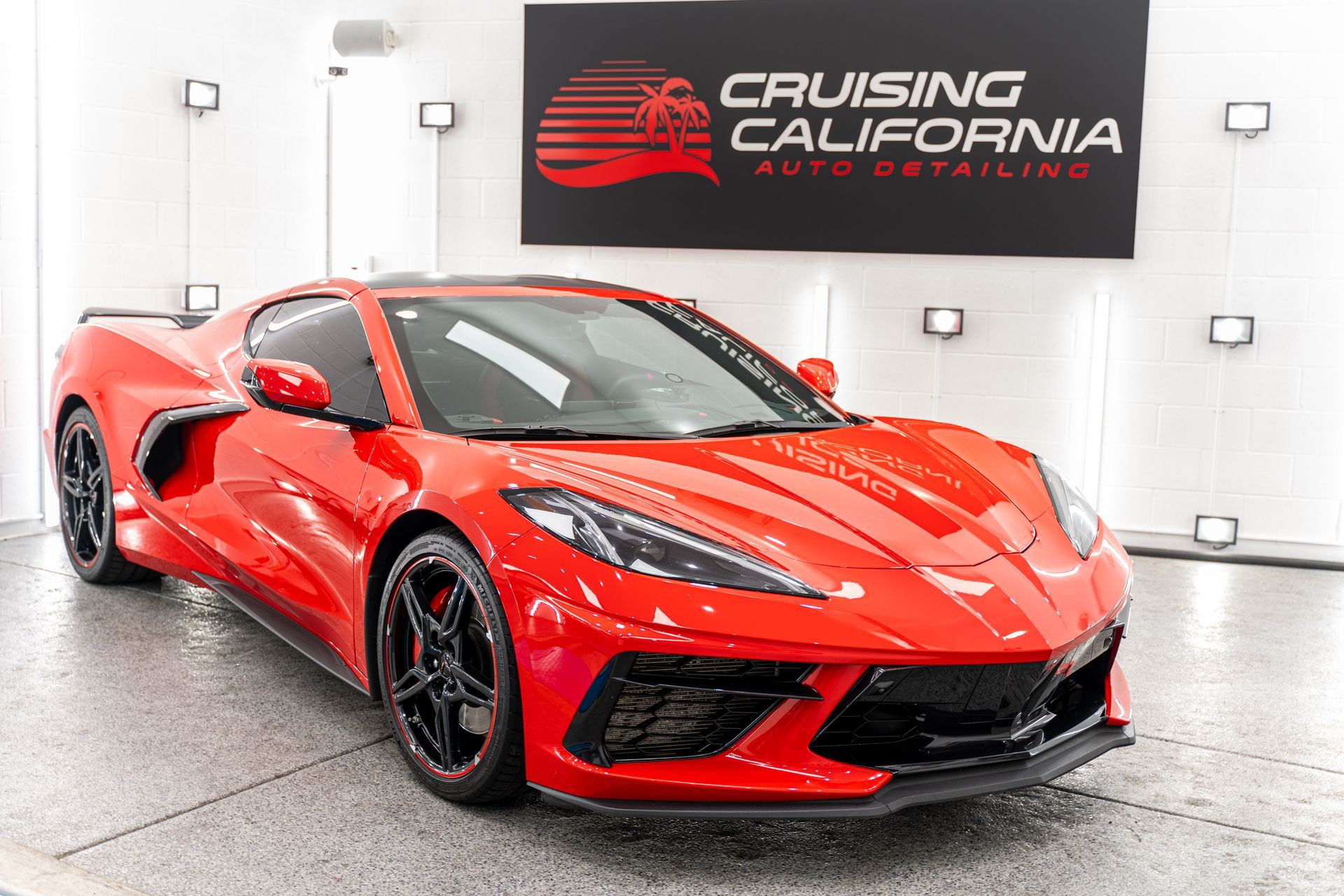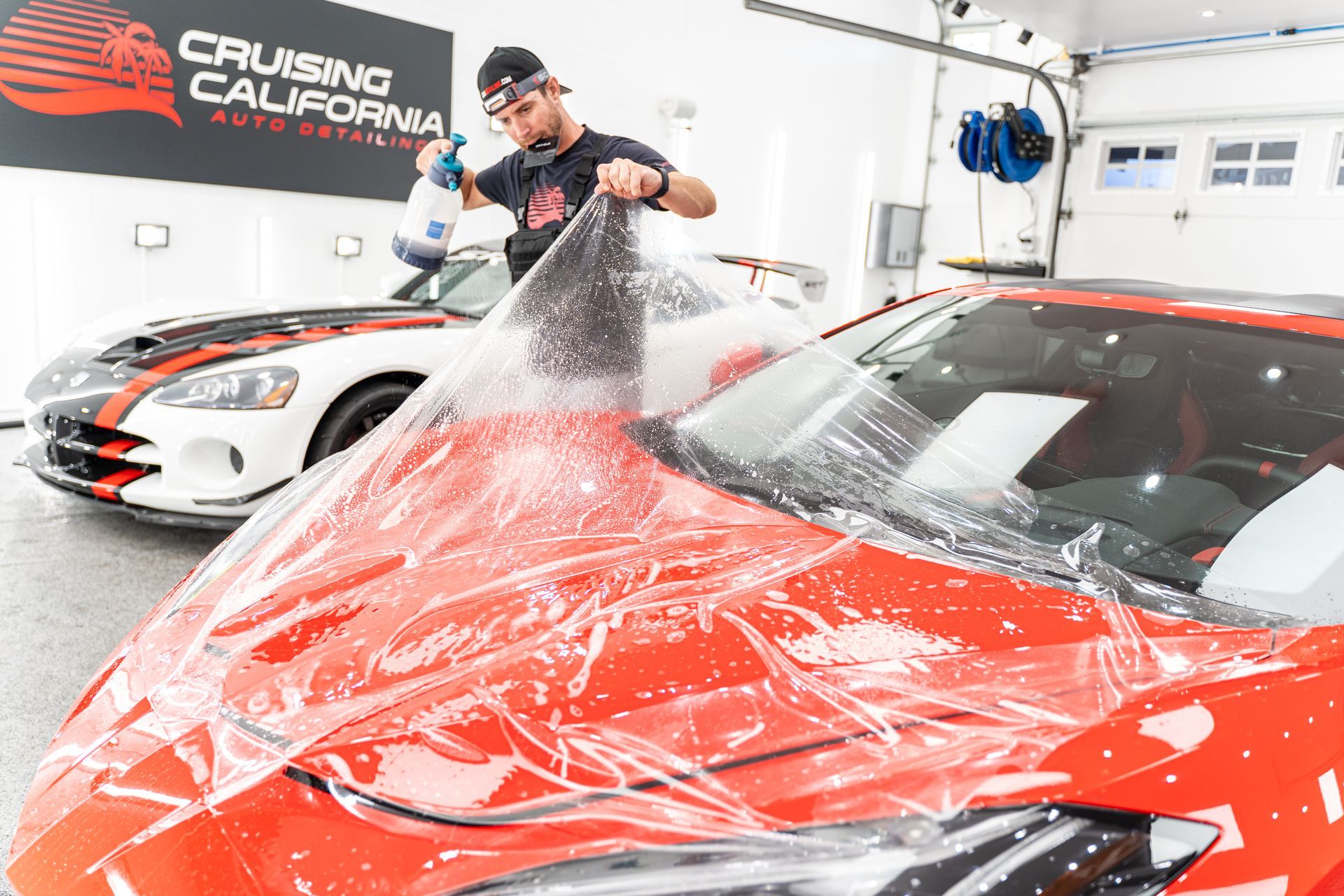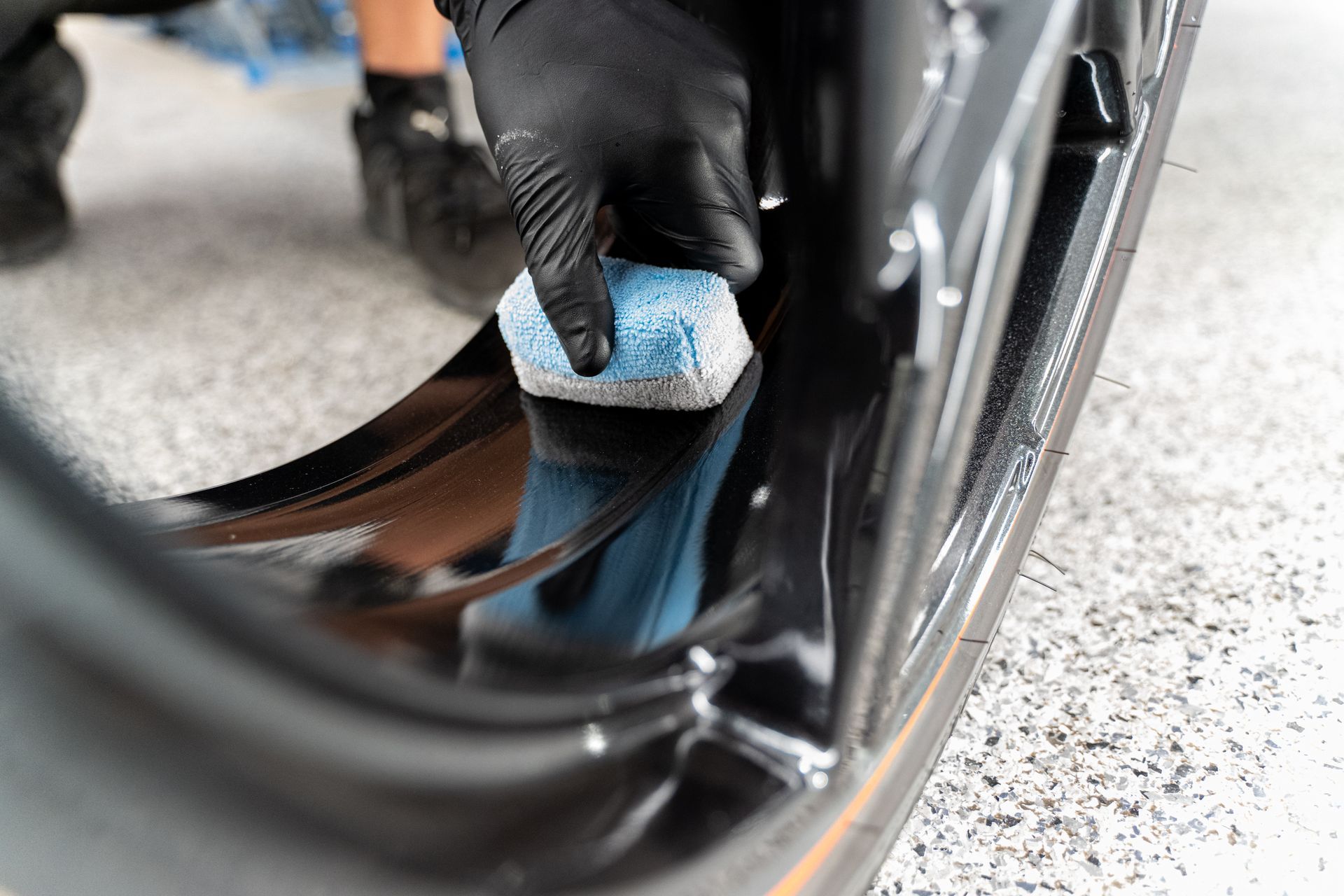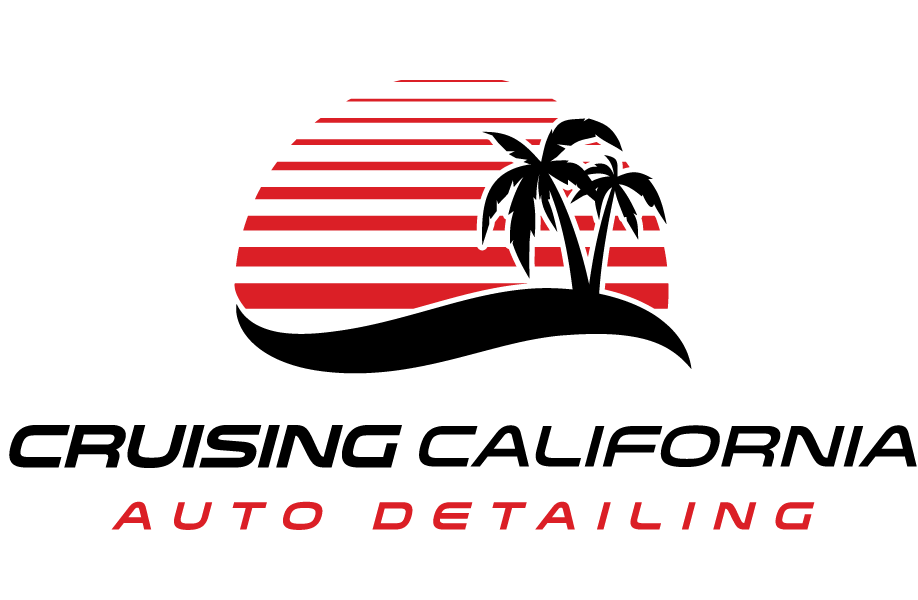Heat-Activated Self-Healing PPF: The Science and Innovative Protection Explained
When it comes to keeping your vehicle looking sharp, there's a new player in the game: heat-activated self-healing paint protection film (PPF). You might be wondering, "How can a film heal itself?" Well, brace yourself for a fascinating combination of science and innovation that keeps your car's exterior pristine. This cutting-edge technology not only protects against scratches and dings but also makes minor imperfections disappear like they never even happened!
Heat-activated self-healing PPF operates on the principle of thermoplastic polyurethane (TPU), which has molecular structures that respond to heat by rearranging themselves. When exposed to warmth or friction, these molecules become more flexible, allowing the film to close up minor scratches and scuffs, effectively "healing" itself and preserving the integrity of your vehicle's surface.
How Heat-Activated Self-Healing PPF Works
The heart of heat-activated self-healing PPF lies in its thermoplastic polyurethane (TPU) composition. This specialized material is designed to be both durable and flexible, which is essential for handling everyday wear and tear while maintaining the vehicle's aesthetic appeal. The magic happens within the three meticulously crafted layers of the film that together create a formidable shield against scratches and impacts.
Layers of PPF
Each layer serves a specific purpose to ensure that the film not only protects but also heals itself when needed.
- Topcoat Layer: The topmost layer is where the real enchantment takes place. This layer is elastic and flexible, allowing it to bend and stretch without losing its integrity. When minor scratches or scuffs occur, this layer becomes active, thanks to its molecular structure, which allows it to rearrange itself back into position upon heating.
- Middle Layer: Directly beneath the topcoat, this TPU layer acts as an energy distributor. When a force impacts the film, such as from gravel on the road, this layer absorbs the shock and redistributes it throughout the film. This impact absorption reduces the likelihood of deep-set damage penetrating further into the structure.
- Adhesive Layer: The adhesive layer ensures that the PPF sticks firmly to your vehicle's paint while also being easily removable without leaving residue behind. Its quality is paramount; if it's not applied correctly, even the best films can underperform.
When damage occurs—like a minor scratch from car wash brushes or small stones—these layers work in harmony to restore the film's surface. Picture this: you park your car after a long day and notice a mark left behind by a wayward branch or someone else's door. You don't have to worry much—this is where the brilliance of heat activation shines through. With just a bit of warmth from the sun or perhaps a blow dryer held at a safe distance, those misaligned molecules in the topcoat begin to dance back into their original positions.
Think of it like this: when your favorite sweater gets wrinkled, a hot iron makes those fibers smooth again. Similarly, heat provides energy for TPU to mold back to its flawless state. In most cases, minor scratches will disappear within 30 seconds to five minutes after exposure to warmth, giving your vehicle the appearance of being freshly detailed. The self-healing capabilities may recover up to 90% of its original appearance, depending on environmental conditions and maintenance practices. There’s a clear blend of practicality and innovation that keeps your car looking sharp while safeguarding against everyday challenges.
Understanding this technology’s foundations paves the way for exploring how these materials react under different conditions and what principles govern their reactivation.
Scientific Principles Behind Film Reactivation
At the heart of heat-activated self-healing paint protection film (PPF) lies thermoplastic polyurethane (TPU), which behaves quite differently from typical plastics. When you apply heat, whether through sunlight or a heat gun, the polymer chains within TPU regain the ability to move freely. This flexibility is key; it allows them to realign themselves in their original positions after being disturbed by friction or scratching. Once the heat source is removed, these chains cool down and bond back together, effectively 'erasing' minor surface damage. Think of TPU as a group of dancers. When they are heated up, they can move and shift about on the dance floor; however, once the music stops and the temperature lowers, they return to their designated spots, perfectly aligned once again.
Molecular Realignment
The practical implication of this alignment is profound. Unlike traditional films that can't recover from scratches or scuffs, TPU-based self-healing films leverage their molecular characteristics to maintain a pristine appearance without requiring external repairs. This attribute is vital for car enthusiasts who seek to preserve their vehicle's aesthetic integrity over time. For instance, when a minor scratch forms from an errant pebble on the highway, outdoor temperatures or the warmth generated through normal use can activate the self-healing process in a matter of minutes. The parameters for activation typically range between 60°C and 80°C (140°F and 176°F), making it accessible under common environmental conditions.
With TPU-based films lasting up to 10-12 years when properly maintained and installed, it's clear why many automotive detailers advocate for self-healing PPF as a smart investment. The technology extends not only the film’s lifespan but also enhances the longevity of your vehicle’s finish beneath it. As we transition to explore protective measures and installation processes, understanding how these self-healing mechanisms operate will play a pivotal role in your choice of vehicle care solutions.
Vehicle Protection and Installation
The benefits of heat-activated self-healing paint protection film (PPF) extend far beyond its ability to mend minor scratches. This innovative material forms a resilient barrier that protects your vehicle from everyday mishaps—think small rocks or errant shopping carts—as well as damaging UV rays and environmental contaminants. Let’s explore what makes this film a superior choice for preserving your vehicle’s finish while emphasizing the importance of professional installation.
Professional Installation
When it comes to installing self-healing PPF, there's no room for shortcuts. A professional installation is essential since any oversight during the process can undermine the film's protective qualities. Imagine investing in a top-tier product, only to have it fail prematurely due to improper application! To ensure lasting protection, the vehicle’s surface must be expertly cleaned beforehand. This clean slate allows for optimal adhesion, crucial for both short-term aesthetics and long-lasting performance. The installation process typically takes between 10 to 20 hours, depending on the size of the vehicle and the expertise of the installer. Before I installed my own PPF, I always ensured that every inch of my car was immaculate; dirt and debris can create imperfections underneath the film that might bite you later. Think of it this way: if you're going to place a protective layer over your car, it should be on the best possible foundation. Once installed correctly, however, the true magic of PPF becomes apparent: its remarkable durability and self-healing capabilities come into play.
Maintenance Tips for Longevity
After investing in high-quality self-healing PPF, it's equally essential to maintain it properly to guarantee its longevity. Regular washing with pH-balanced shampoo is simple yet important; it helps preserve the life of the film while avoiding corrosive effects from harsh chemicals commonly found in some cleaners. Picture this: you've just washed your car and noticed how easily dirt slides off the surface—a testament to how well-maintained PPF can enhance your vehicle's appearance.
And let’s not forget the occasional stubborn scratch that doesn’t seem to vanish effortlessly! For those moments when scratch removal takes a bit more elbow grease—such as after a particularly spirited weekend drive—using moderate heat—either from a heat gun or simply warm water—can reactivate those self-healing properties and make those minor blemishes disappear like magic. By understanding both the incredible value of professional installation and adequate upkeep, you'll ensure that your investment in self-healing PPF remains valuable over time. As we transition further, it's essential to examine how this innovative protection strategy stacks up against traditional options available today.
Performance vs. Traditional Coatings
One key point to consider is that traditional coatings, while they may boast resistance to certain stains and scratches, often lack the advanced technology that allows for recovery from minor abrasions. In contrast, self-healing PPF utilizes heat-activated properties to mend itself almost instantly when exposed to warmth or sunlight. This means that as you park your car in the sun or simply go about your day, any small scratches can vanish without requiring additional effort on your part.
Consider it this way: traditional coatings act like a conventional shield; they provide protection against minor attacks but cannot recover once damaged. Meanwhile, self-healing PPF functions like futuristic armor that has the ability not just to deflect blows but to repair itself after each skirmish—ensuring continued durability and aesthetic integrity. Additionally, when it comes to longevity and maintaining appearance, modern self-healing PPF outshines its traditional counterparts.
While traditional coatings may become dull or discolored over time due to exposure to environmental stresses such as UV light and pollutants, self-healing PPF is formulated with advanced polymers that resist fading. This enhances the film's lifespan and keeps your vehicle looking sharp and polished throughout its service life. The combination of durability with the ability to self-repair minimizes the need for frequent replacements, ultimately saving both time and money.
Yet, there's more than just performance metrics; we should also consider ease of maintenance. Many modern coatings require regular cleaning and care to maintain their protective qualities, whereas self-healing PPF features smart properties such as hydrophobic layers that repel water and contaminants. This clever design makes washing your vehicle easier and extends the time between necessary cleanings.
Recognizing these advantages illustrates why many vehicle owners gravitate toward self-healing solutions for optimum care of their investments. As we explore further, we will uncover how these innovations translate into tangible benefits in everyday scenarios. Navigating the world of paint protection has never been simpler: with advancements paving the way for innovative solutions like heat-activated self-healing films, protecting your investment is more effective than ever.
Real-World Benefits and Longevity
The practical advantages of heat-activated self-healing PPF extend far beyond just its durability. One of the most significant benefits is scratch resistance. Imagine driving down a gravel road and getting a few stray pebbles that leave light marks on your vehicle's surface—those marks could disappear almost like magic! With self-healing technology, minor scratches virtually repair themselves when exposed to heat from the sun or even when you wash the car with warm water. This means fewer trips to the body shop and more time enjoying your ride.
Additionally, there's a notable aspect of aesthetic preservation. High-quality PPF not only acts as a barrier against physical damage but also maintains the vibrant look of your vehicle's paint. Over time, vehicles without protection often show signs of wear, such as fading colors or unsightly blemishes. In contrast, those fitted with self-healing PPF appear fresh and new for much longer. This enhanced appearance contributes significantly to both driver satisfaction and resale value. A well-maintained car protected by PPF not only looks great but can retain up to 70% of its original value over years.
Now think about cost efficiency. With traditional paint coatings requiring touch-ups or complete reapplications every few years at considerable expense, PPF stands out for its low maintenance requirements. Studies suggest that high-quality PPF has a lifespan of up to 10 years with proper care—far superior compared to traditional coatings that usually last only 2-3 years. This effectiveness translates into significant cost savings, which can be crucial for many vehicle owners looking to enhance protection without breaking the bank.
By investing in self-healing PPF, you’re not only enhancing the aesthetic appeal of your vehicle but also ensuring it remains protected from daily wear and tear while saving money in the long run. Moreover, its ability to repel UV rays aids in protecting your car’s paint from oxidation and discoloration—a common issue leading to diminished resale value. It’s fascinating how these modern films combine functionality and style, allowing for unparalleled versatility in customization without sacrificing performance.
Let’s not forget that while PPF offers fantastic advantages, maintaining it properly is key to unlocking its full potential longevity. Using pH-neutral shampoos during cleaning can prevent deterioration of the protective film, ensuring that you enjoy its benefits for many years ahead. Embracing heat-activated self-healing PPF is about stepping into a realm where technology meets practicality. The combination of durability, aesthetic longevity, and cost-efficiency makes this protective film an essential choice for every conscientious vehicle owner seeking the best in automotive care. As we explore further, it’s essential to consider what common issues may arise with this innovative technology and how they can be effectively addressed.
Addressing Common Concerns
Cost Concerns
It's true that the price of self-healing PPF can raise eyebrows, especially when compared to traditional protection methods. However, it's essential to look beyond that initial cost. Think of self-healing PPF as a long-term investment—much like protecting your home with quality roofing or a reliable security system. The durability and strength of this protective film mean reduced repair costs, which might otherwise arise from scratches or environmental wear. Over time, the money saved by avoiding repainting and extensive repairs far exceeds the original expenditure on the film.
Imagine driving around without the constant worry of minor dings and damage. Instead of spending a fortune on touch-ups or bodywork over the years, your vehicle stays pristine longer—a fact that many owners treasure. By weighing this initial cost against potential savings down the road, it becomes clear that self-healing PPF isn't merely an expense; it's an investment in longevity.
Durability Questions
Another common concern revolves around the effectiveness of self-healing PPF in defending against deep scratches. Many wonder if such a product can truly deliver on its promises of protection. The reassuring fact is that while it works wonders for minor surface abrasions—those annoying little scratches from everyday driveways and road debris—self-healing PPF does not claim to replace professional bodywork for significant damages.
To illustrate, everyday bumps can happen—parking lots, driveways, and even rocks kicked up by other vehicles pose threats to your paint job. Self-healing PPF provides a sacrificial layer over your car's finish, actively working to smooth out light scratches with heat exposure from sunlight or a warm garage. However, for deeper gouges inflicted by sharp objects, you will still need professional help to restore the affected area properly. Fortunately, the frequency of encounters leading to such drastic damage is significantly reduced with the installation of self-healing PPF.
In conclusion, understanding both cost implications and durability can empower consumers to make informed decisions regarding their vehicle's protection needs. With proper care and timely application, self-healing PPF stands out as a forward-thinking solution for today's vehicle owners.
Unrivaled PPF Service in El Cajon, CA
Give your vehicle the protection it deserves with expertly installed paint protection film from CCA Detailing & Ceramic Coating | PPF in El Cajon, CA. Their team applies each film with precision to guard against rock chips, road grime, and harsh weather—preserving your paint without compromising style. For drivers who demand durability and a flawless finish, CCA delivers protection that performs.











